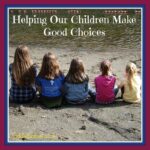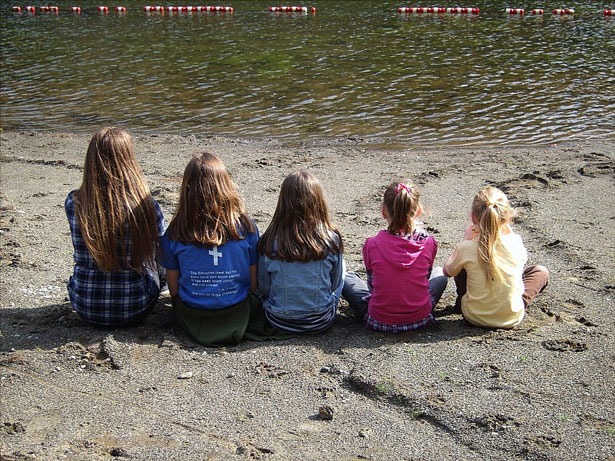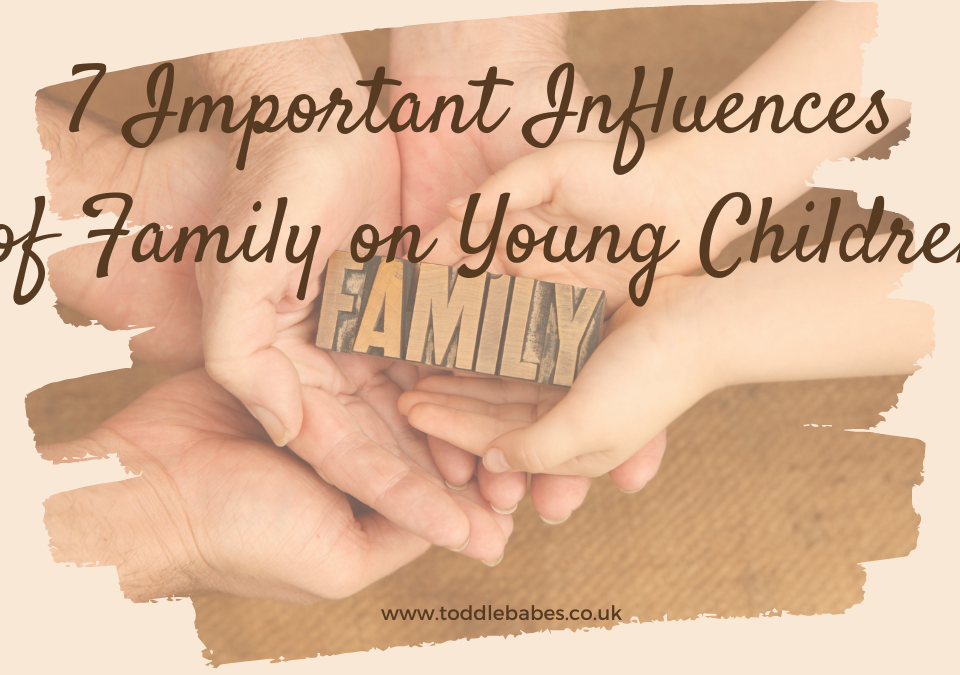
Encouragement is the Seed of Success

Helping Our Children Make Good Choices

As parents, we fear the worst for our children. We see an imperfect world, where strangers and circumstances can discourage, frighten, harm, or endanger our little ones. But kids need not be plagued with thoughts of a dangerous world, and parents shouldn’t feel the need to create a protective bubble around them. The best defense is to empower kids with a boost of confidence and how-to-deal skills when facing possible dangers.
Table of Contents
Self-Esteem
Self-esteem is the collection of beliefs or feelings that we have about ourselves or our ‘self-perceptions.’ How we define ourselves influences our motivations, attitudes, and behaviors, and affects our emotional judgment.
Self-esteem includes other qualities, such as self-confidence, pride, independence, self-reliance, and self-respect. Experts say we develop our self-esteem during childhood, and it constantly evolves as we are shaped by the different social interactions and experiences we go through.
A child’s self-esteem is based on a positive relationship with parents.
Enhancing a child’s self-esteem is the first step to ensuring his or her right to personal safety. Keeping children away from physical harm is only secondary. Programs have been developed to teach children self-protective skills, and families recognize and respond to potentially unsafe situations. Children who are conscious of their self-worth feel good about themselves, pulling out all the stops to any sign of threat or danger. Moreover, self-esteem develops the same positive communication skills and attitudes, which children could pass on to the next generation.
A child’s self-esteem is based on a positive relationship with parents and eventually teachers. Parents can foster that can-do attitude in their children with a “Wow!” or a “That’s great!” every time they accomplish a feat. These positive comments form children’s first concept of success, which ultimately leads to a healthy self-perception.
But praise and positive reinforcement alone will not make children feel better automatically. Providing them with lots of love, care, and understanding is equally significant. Children who are happy and confident may still experience low self-esteem because they do not feel loved. Likewise, children who are loved and pampered at home may still feel inadequate and incompetent, thus ending up with low self-esteem. Hence, a balance of both should be present.
Delivering positive messages and engaging in constructive communication lead to a healthy self-perception. Try these time-tested tips to enhance your child’s can-do attitude.
- Limit the “Don’ts” to the barest minimum: State your requests positively. Too many negative words in your sentences will only lead to a child’s self-doubt.
- Let kids complete their sentences: Avoid interruptions, as these disrupt their train of thought or make them forget what they’re saying. Otherwise, they’ll feel as if their ideas are insignificant and not worth listening to. Always give them time to reply…even if it seems frustratingly long to you.
- Establish eye contact: Be a good model of a conversation by giving kids your full attention. This communicates that you are interested in what they are saying and that you are stressing a noteworthy idea, as well.
- Take turns in the conversation: Agree on who speaks first, and who speaks next. It is important for parents to encourage kids to verbalize their ideas and feelings, but to also wait for the go signal to speak. Children should be able to understand that if people talk all at the same time, they will end up understanding nothing.
- Keep a calm, uncritical, and non-irritable manner when explaining. By removing emotion and remaining impartial and practical, your child will learn how to communicate more effectively with others.
- Keep your “speech” concise. Use language that kids will easily understand, explaining to them what they need to do, and why they should or should not do it. Speaking in a calm tone also keeps panic from rising within them.
- Criticisms should still be present.
Delivering positive messages and engaging in constructive communication lead to a healthy self-perception.
We should also take notice of shortcomings or misbehaviour as we see it or learn about it. Explain why an action is not acceptable, and allow kids to think of ways to avoid doing it again.
Smart Thinking
Facing challenges and rising from them is a way to help strengthen a child’s spirit. Though parents would prefer to totally shield their children from threats and hardship, doing so would cause as much damage. And let’s face it: Adversity is inevitable. But training our children to become prudent and intelligent thinkers is a surefire way to protect them from possible harm.
An effective method to hone children’s thinking skills is to practice what-if scenarios with them. Children need to feel as if they have discovered why they should avoid potentially dangerous circumstances. Parents can engage in a dialogue with their kids. It’s important to let them think for themselves, to foster their problem-solving skills. Parents shouldn’t dictate the solution, but rather, allow kids to answer first, and then guide them unhurriedly to every possible avenue.
We can’t control what our children do every minute. But we can help them think, early in their lives, about what is and what is not safe, so we can trust them to take responsibility for their actions and to make safe decisions now and as they mature.
Here are some possible danger scenarios, plus pre-emptive tips:
-
Bully Alert
Bullies pick on kids who are often alone, shy, quiet and look like they can’t stand up for themselves. Kids become victims of bullies because they have a very poor self-concept, believing their own dignity and self-worth are unimportant. What’s worse is that most bullied kids are too afraid to tell their parents – either because they are scared their parents will think they’re weak, or because they think their parents won’t do much to rectify the situation.
What You Can Do
To help kids deal with bullying and prevent them from becoming bully-victims, teach them the lesson of reciprocity. Help them realize that relationships are reciprocal and that they should treat others as they wish to be treated. They will come to realize that people act as they do for many different reasons. Asking children questions that pay attention to their and other people’s feelings also helps. These questions include:
- Why do you think bullies need to pick on others?
- Do you have another reason?
- What do you think a bully is feeling or thinking?
- How would you feel if a kid bullies you?
- What can you do or say if you’re being bullied?
By fostering a climate of empathy at home, children learn the value of self-worth – for themselves and for others. According to child experts, you should let your child know that he or she has a right to insist that others treat him or her with respect and dignity. They are not to tolerate cruelty of any form, whether in real life, in the form of nasty jokes on sitcoms, or in other forms of entertainment.
2. Stranger Danger
“Don’t talk to strangers” is not necessarily the key. We cannot expect our kids to do this if we adults break this rule every time – in the grocery store, waiting in line at the movie house, or even in school. Children should know that most adults they encounter are basically good people. Often, these “strangers” are actually people who can help kids in case of emergencies.
What You Can Do
Teach kids to pay attention to their instincts. Parents should tell their kids to listen to that voice in their heads; if they don’t feel safe or they feel it’s not right, they shouldn’t go through with it. We need to give children safety nets of people they can go to if they need help, such as uniformed law-enforcement or security officers, a store salesperson with a nametag, the person in an information booth at a mall or other public venue, or a mother with children.
Next, describe the proper way to handle a stranger. A common ploy for abduction attempts is for strangers to pretend that they are a friend of the child’s parents and that the parents – who are either sick or injured – asked them to pick the child up on their behalf. To help children deal with this particular situation, let them run the scenario in their heads, then ask them the following questions:
- What do you do when a person you don’t know says mommy or daddy asked him or her to pick you up from school, and that you should hop into the car?
- Do you run to your teacher, the principal, or the security guard?
- What do you do if the stranger grabs you?
- What do you think is the safest thing to do while waiting for mommy or daddy after school?
- Do you stay with your teacher in the classroom or the principal’s office?
Should a stranger grab your kids, children should be taught to run for help and scream, kick, make a loud noise and keep yelling something like “You’re not my mother!” or “You’re not my father!” More importantly, teach your child from a very young age why he or she should never go anywhere with any adult, without your permission, whether that person is a stranger or a friend.
Cecile Burton
I am a preschool and primary school teacher and mum to 3 children. I have been involved in education since 1997 and have trained in a variety of educational specialist areas. It is with this expertise that I write articles to help parents and educators provide quality learning experiences for the children in their care.




